Research & Development
PMC was founded in the belief that there were many ways in which loudspeaker design could be improved. Through innovation, attention to detail and working with music creators we develop new technologies and products which reproduce sound with the highest accuracy, to be the reference for all.

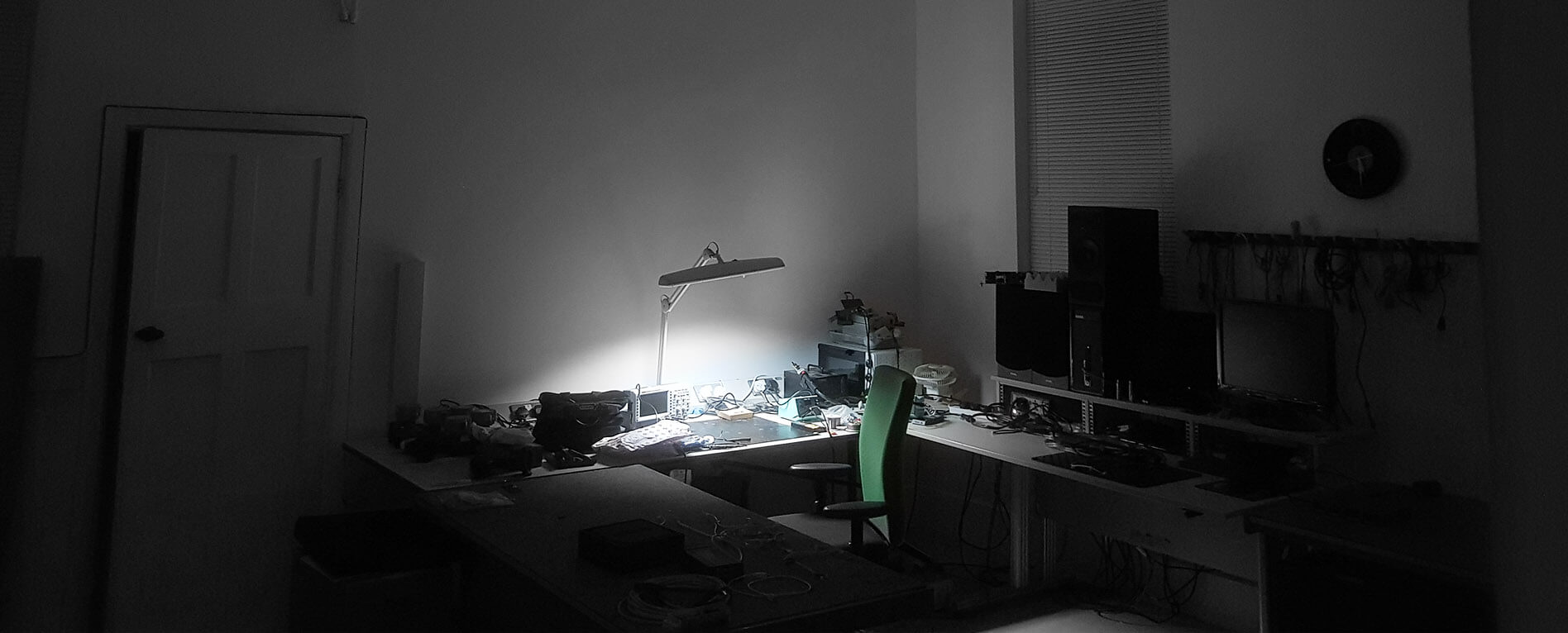
Peter Thomas talks R&D
Peter Thomas (Company founder) on the beginnings of PMC R&D through to today. Discussing our technologies, measurements techniques and design philosophy.
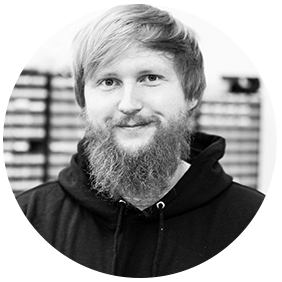
The PMC R&D Department
As Principal Acoustics and R&D Engineer at PMC, it is my job to ensure that the acoustic performance of all our products is as good as it possibly can be, and to research and develop new technologies and processes to make sure that we keep on advancing their measured and audible performance with each new design.
It might be a terrible cliché, but speaker design and the pursuit of sound quality is more than just a job for me – it is a real passion. As a classically trained violinist and drummer I have always been very aware of how live instruments and music should sound, and trying to push loudspeaker performance closer and closer to this goal of reproducing reality is a fascinating and incredibly satisfying challenge to get to work on every single day!
At PMC we have an amazing team of like-minded people who are all pulling towards the same goal of reaching sonic perfection with our products. We’re a small team with many different talents and areas of expertise so we’re always learning from each other whilst also getting the freedom to pursue our ideas and interests, ensuring that we never run out of exciting ideas and projects to work on.
A typical R&D project might begin with a discussion of a simple idea or thought - ‘What would happen if we tried to do X?’ or ‘How can we optimise parameter Y whilst minimizing the size of the part?’ After reading any relevant literature around the question, an experiment may be designed to test any theories or proposed solutions. Prototype parts may be produced following on from the conclusions of any experiments, and these may be tested on existing products or current development projects to see how they perform in practice. Once an R&D project is concluded, the results will be shared with the product design team, giving them another tool to use in the design of future PMC products, ensuring that our speakers are always at the cutting edge of loudspeaker design and technology.
It is my goal to ensure that the R&D department at PMC continues to push the boundaries of loudspeaker design through constant innovation, good engineering and an open-minded approach to new ideas and technologies. Over the past 30 years we have risen to the forefront of the loudspeaker industry, and by continuing our R&D efforts in this way, I hope that we can maintain our reputation of making the best sounding, most accurate speakers available anywhere.
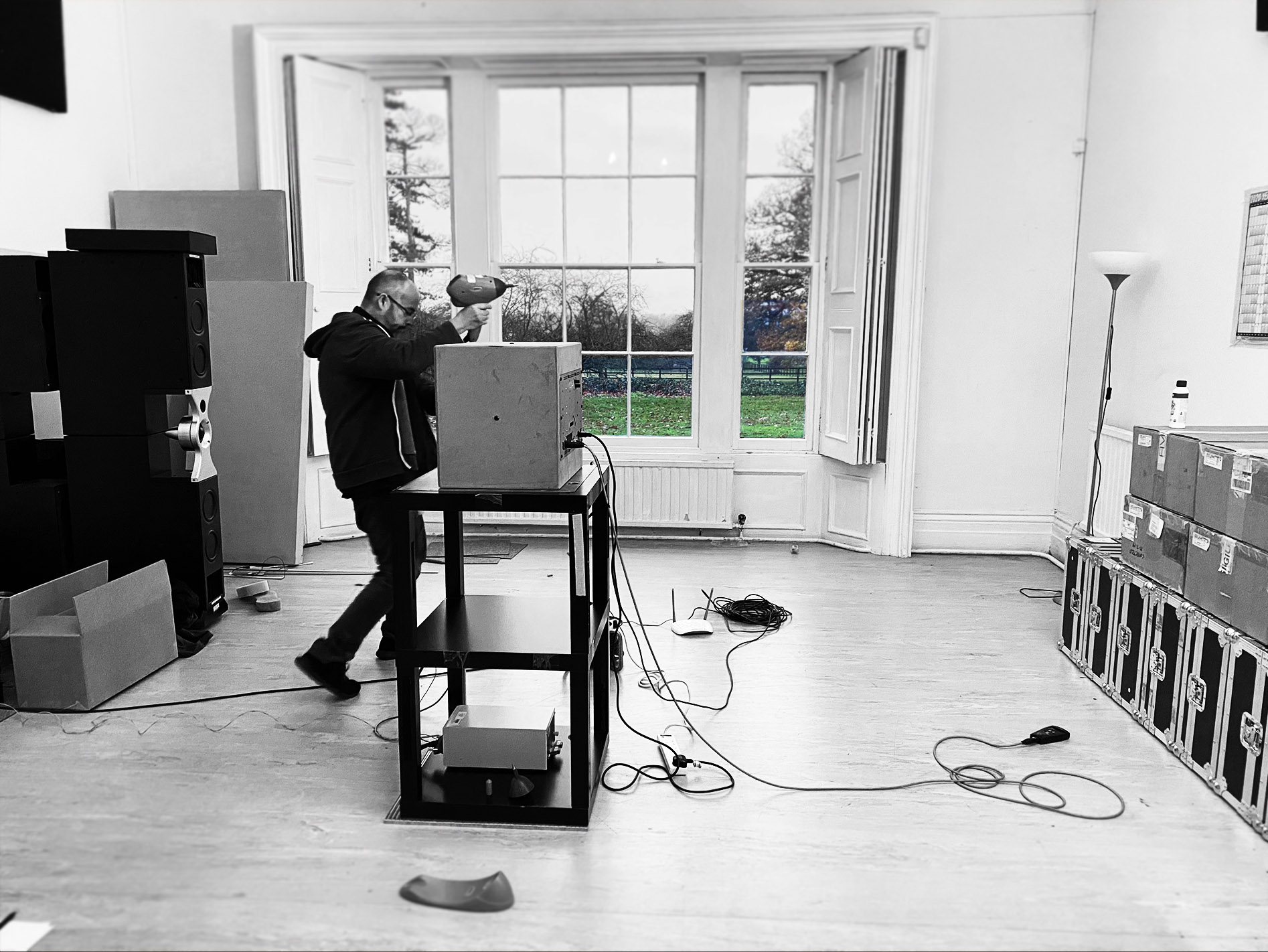
Testing loudspeakers during the development process is a multi-faceted affair, with measurements and music both playing a very important role in determining whether a new design is worthy of the PMC badge.

Facilities
PMC has always had a strong focus on investment into state-of-the-art measurement, testing and design facilities. From the earliest days of the company, we realised that producing the best loudspeakers possible would take a combination of comprehensive listening tests alongside the most accurate and complete acoustic and electrical measurements.
We know that we want our speakers to sound as natural and neutral as possible, but to achieve this goal we must understand exactly how each component of the loudspeaker is behaving both individually and together so that we can quickly and accurately optimise each part and ensure that they all interact with each other in an ideal way (matching dispersion patterns of drive units around crossover frequencies, minimising all forms of distortion, optimising damping and time domain performance etc.)
With this goal in mind, we are constantly updating our testing and measurement facilities in order to push our ability to characterise and understand the performance of the parts and speakers we design. By ensuring that our measurement facilities are as advanced and accurate as possible, we can be confident when we say that we make some of the most accurate, lowest distortion, and most natural sounding speakers in the industry.
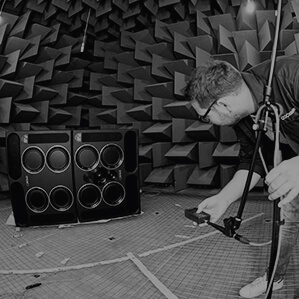
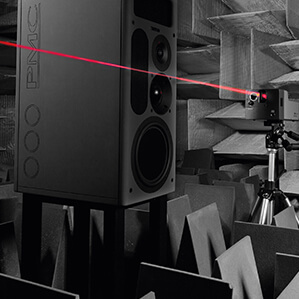
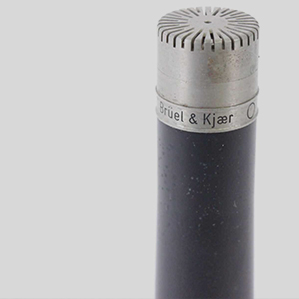
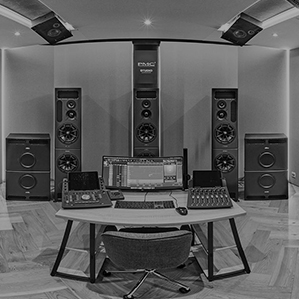
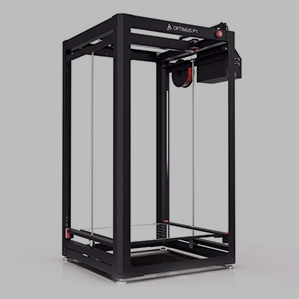
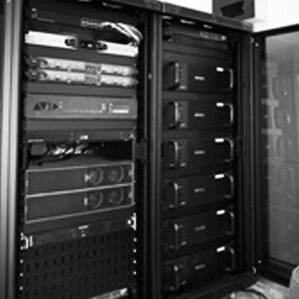
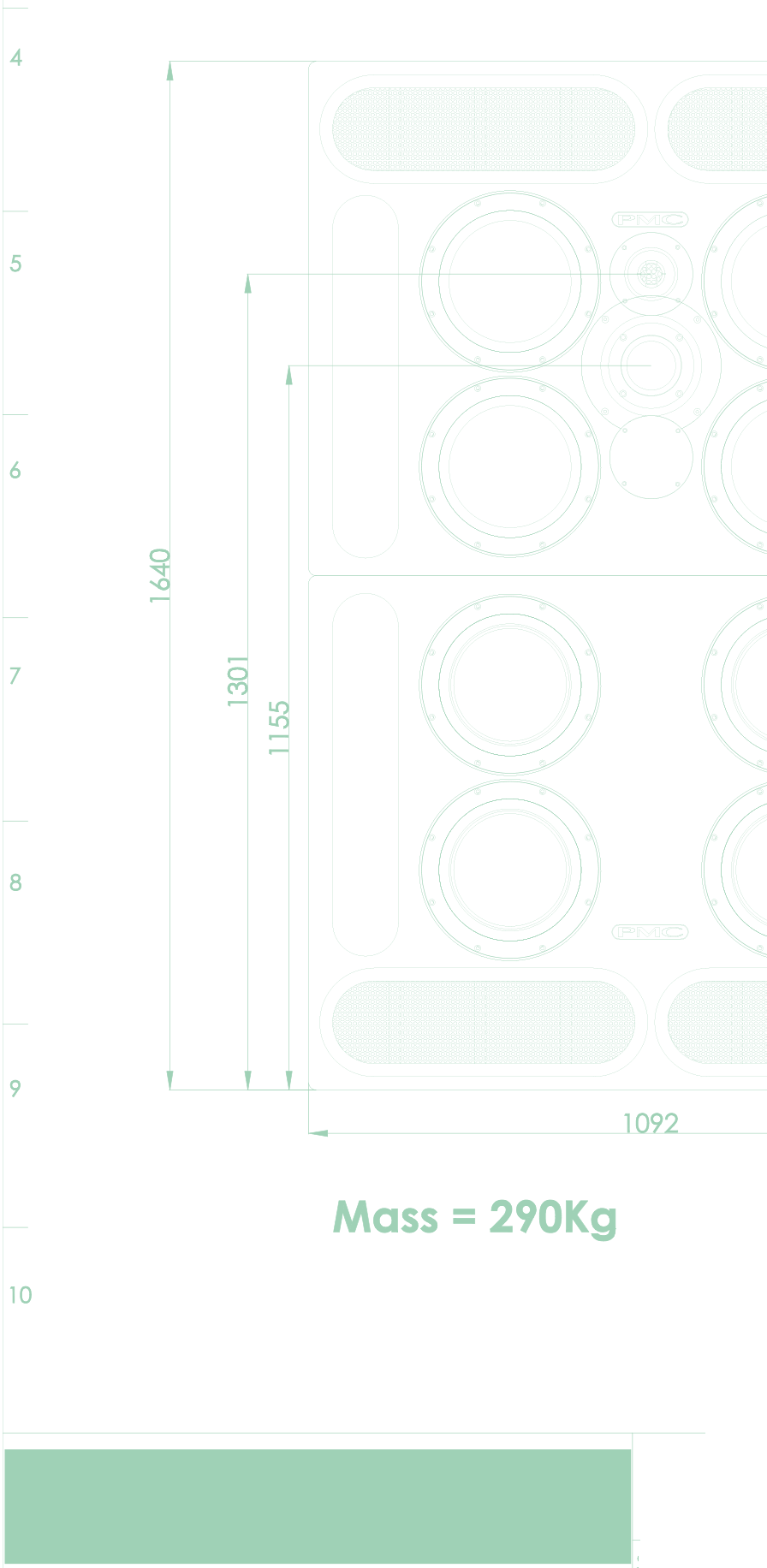
R&D Technologies
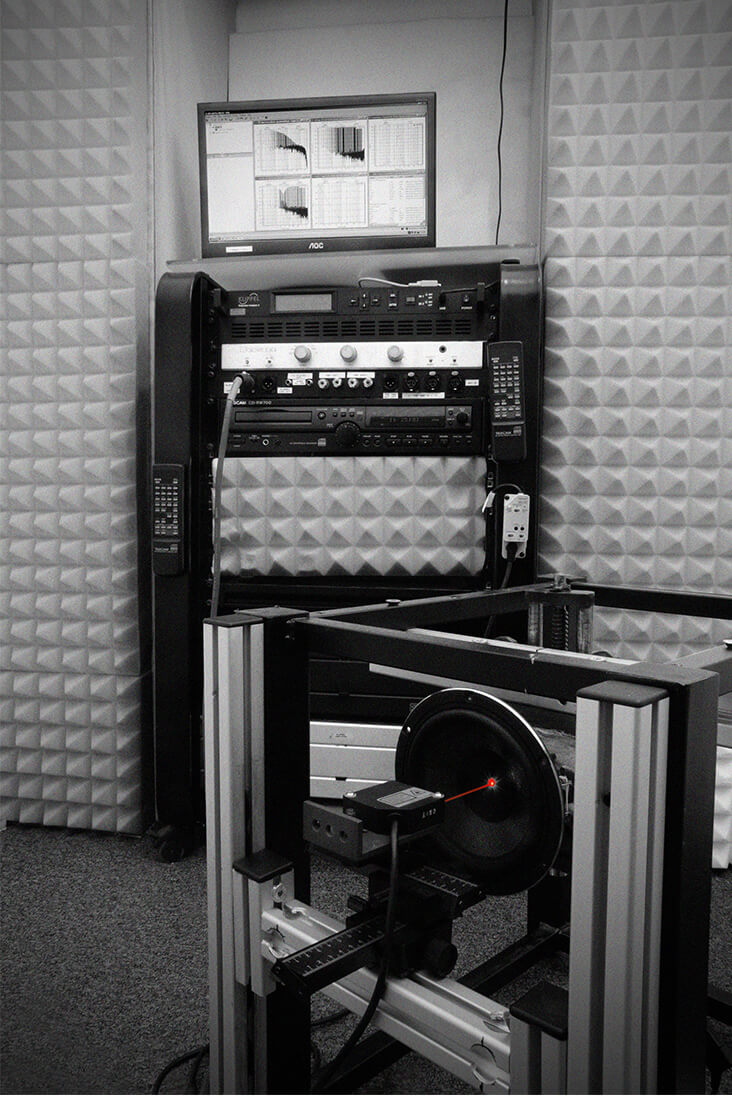
Laser Displacement Measurement
One technology that we have put a particular effort into developing for our R&D projects is the use of laser displacement sensors to measure the motion of loudspeaker drive units both in and out of a cabinet. This has allowed us to not only very rapidly and non-destructively characterise the parameters of drive units, helping us to accelerate the development process of new drive units, but also to precisely monitor the interactions between drive units and cabinets, letting us understand and optimise the relationship between these two vital parts more than ever before.
We have created entirely new metrics to measure the behaviour of drive units in transmission line cabinets that let us very easily understand how efficiently a drive unit is coupling to the air inside the transmission line, and how well the drive unit is being controlled by the line. By experimenting with many different transmission line geometries and different drive units we have been able to obtain a much more holistic understanding of the complex interaction between the different parameters at play, and then optimise future designs for various performance goals (cabinet size, maximum efficiency, maximum bass extension, maximum bandwidth of excursion control etc.)
Rapid Prototyping
Recently, PMC has made significant investments into 3D printing rapid prototyping technologies. This has allowed us to massively speed up the prototyping process for many parts of our products as well as push forward with previously impossible research projects using incredibly complex parts and geometries that would be impractical to manufacture using other processes.
Alongside being able to iterate on prototype parts and ideas incredibly quickly, we can now 3D print entire loudspeaker cabinets up to 1 meter tall, enabling us to realise previously impossible cabinet geometries and transmission line layouts. This is helping us to once again push the limits of speaker design forwards, enabling us to deliver even deeper, cleaner, more accurate bass from smaller cabinets and at a higher efficiency than ever before. Watch out for future PMC products where we hope to bring these incredible developments and benefits to our customers – it really is a hugely exciting time for us

Anechoic Chambers
What are they and why do we need them?
When designing a loudspeaker, it is vitally important that we can completely characterise the acoustic behaviour of each individual component, as well as the system as a whole. To do this as accurately as possible, we need to ensure that our acoustic measurements are capturing only the sound produced by the part we are testing, and not any unwanted reflected sounds or reverberant sounds that could otherwise alter the measurement results and prevent us from getting a true picture of the performance of the speaker.
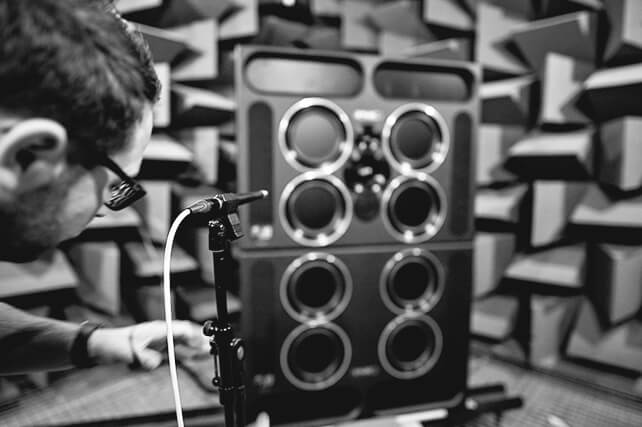
The ideal situation to achieve this goal would be to have the speaker and measurement microphone both floating in mid-air with an infinite distance to any reflective surface on all sides and absolutely no background noise. This would ensure that any sounds the microphone records during the measurement could only come directly from the speaker. This situation can be approximated by placing the speaker on top of a very tall pillar outside, but this can be incredibly impractical, and the measurement will still need to be processed to exclude the sound reflected from the ground (this will cut the measurement accuracy at low frequencies – the taller the pillar, the lower frequencies that can be accurately measured).
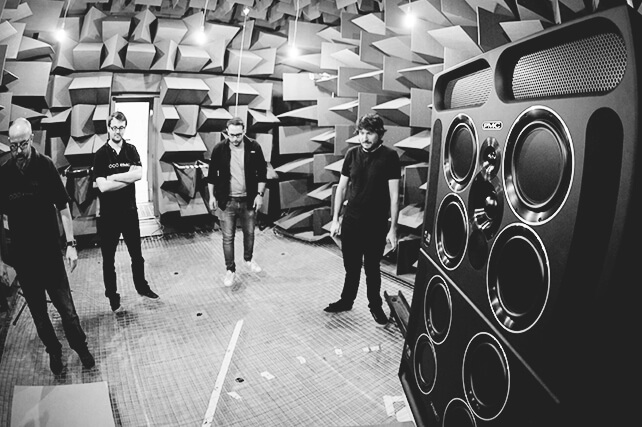
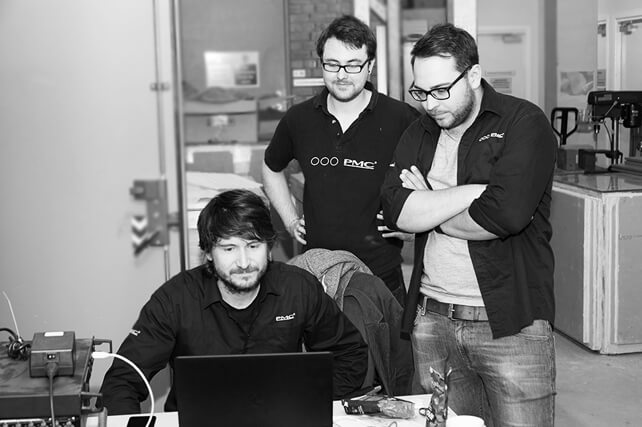
A far more practical method to achieve accurate measurements is to measure inside an anechoic chamber – specially designed room where as much sound as possible is absorbed at all of the room’s surfaces, with the goal being that no sound at all is reflected from the walls. As with the pillar method, there is a low-frequency limit to any anechoic chamber’s accuracy, determined by the depth and specification of the absorption used on the room’s surfaces. A good anechoic chamber however can have almost perfect anechoic performance down to below 80Hz, and only slightly worse performance below this point. This allows for very quick and accurate measurements to be taken of a loudspeaker.
It is important to note that a single measurement microphone can only sample the acoustic output from a speaker at a single point in space. In reality, any speaker will radiate different levels of sound at different frequencies in all directions. To fully characterise this behaviour, it is necessary to take measurements at many different points in a sphere around the speaker under test to build up a complete picture of how it performs. It is possible to use motorised turntables and robotic control systems to automate the process of taking very large numbers of measurements in an anechoic chamber to speed up this process, which is incredibly useful when making iterative design changes as it lets us rapidly determine what effect the latest design iteration of a part is having on the performance of the product as a whole.
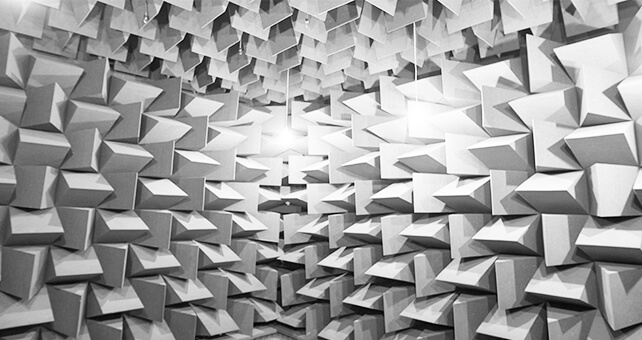
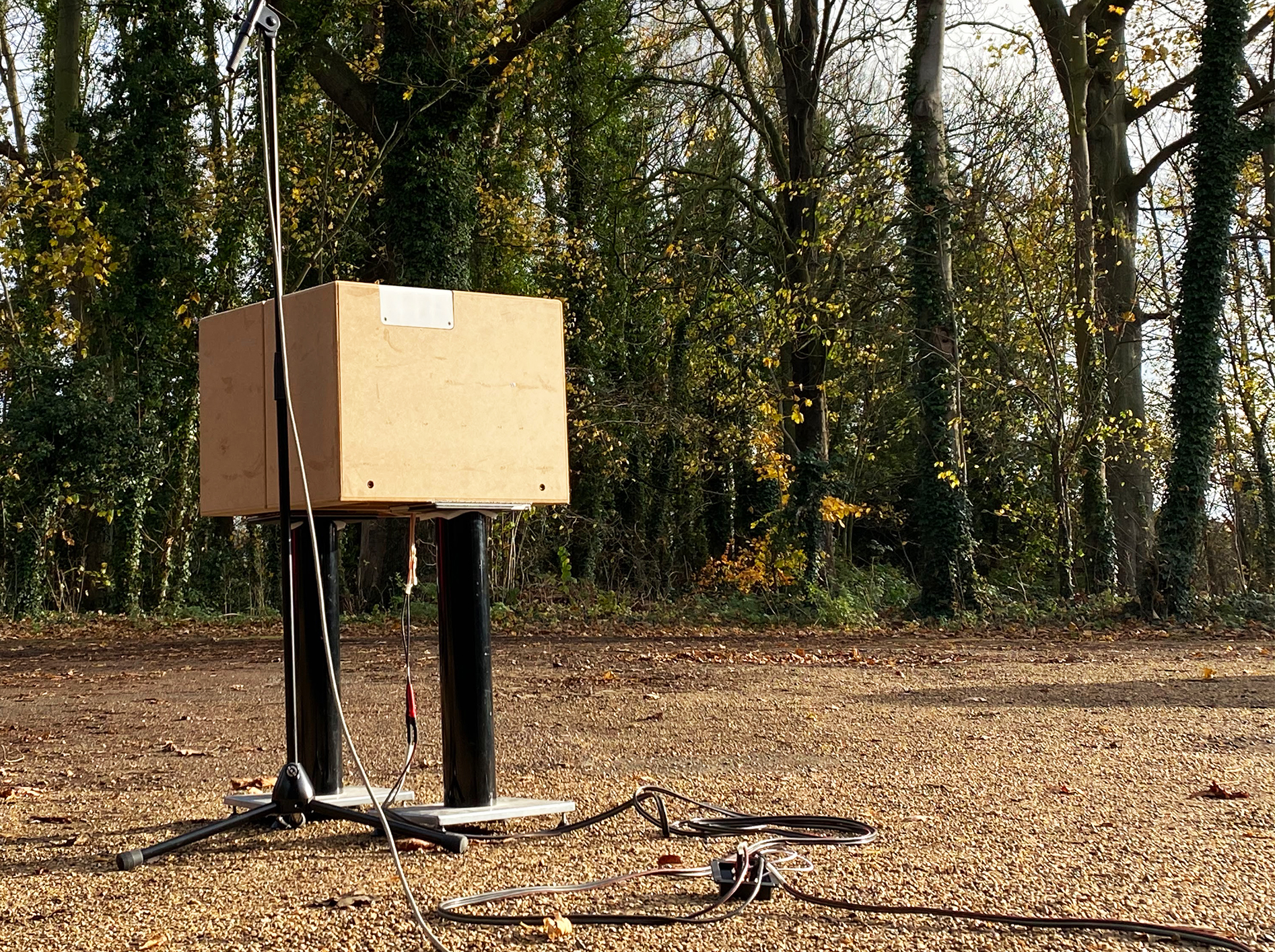
Acoustic measurements
To gain a full understanding of how a loudspeaker or drive unit is performing, we will take acoustic measurements at many different points in space around the speaker, allowing us to build up a picture of how the speaker radiates sound in all directions and at all frequencies. With a full loudspeaker we will also take nearfield measurements of the ATL vent and each separate drive unit to isolate and analyse their contributions to the resultant sound field, as well as to determine the acoustic interaction between the drive units and the ATL. We use accelerometers to determine how our cabinets behave at different frequencies, allowing us to optimise the cabinet geometries and remove all unwanted resonances from their structures. By combining all these steps and many more we are able to understand every aspect of a loudspeaker’s performance, helping us to develop truly exceptional loudspeakers that have astonishingly wide and even dispersion, are free from unwanted resonances and colouration, and have a completely natural, effortless sound.

